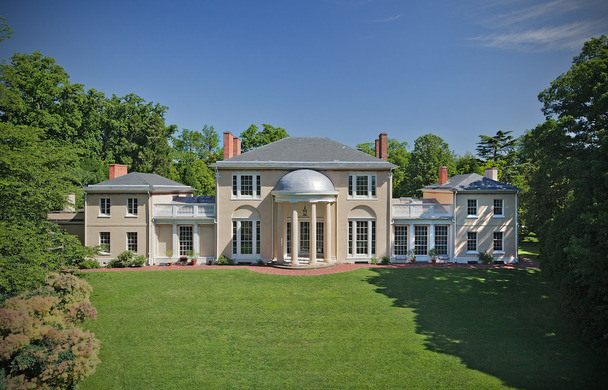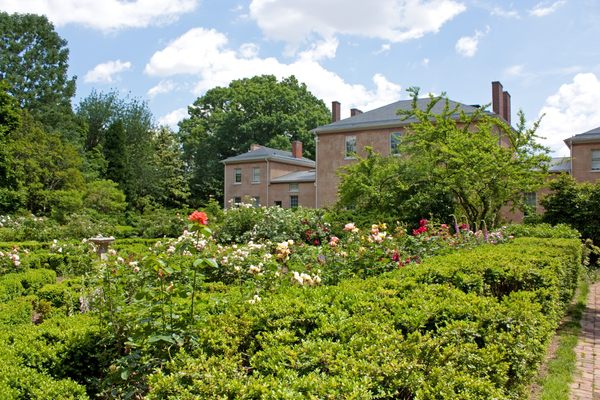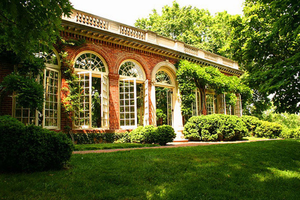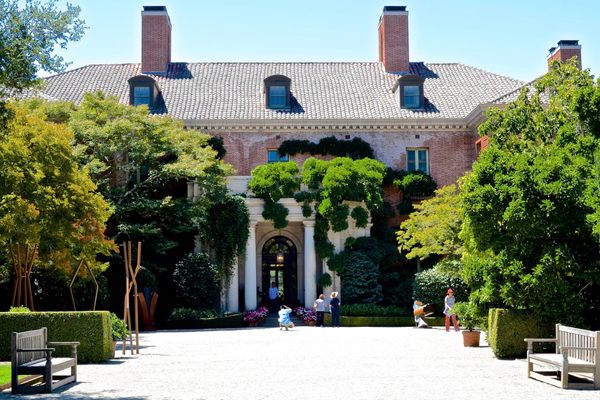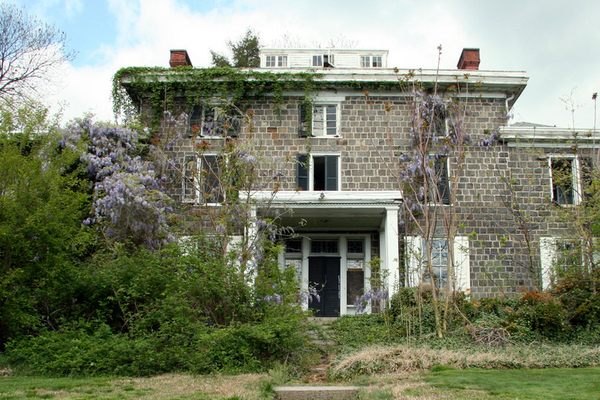About
Six generations of the Peter Family—from founders Thomas and Martha (George Washington's step-granddaughter) to their great-great-great grandson, Armistead Peter III—were born, married, and died in the rooms of this National Historic Landmark in the hills above Georgetown.
Designed by the architect of the Capitol (and the Octagon House), William Thornton, the house stayed in the family from 1805 until 1983, when it was deeded over to the Tudor Place Foundation. It's one of America's last intact urban estates from the Federal Era.
In addition to the Peter's residence, the brick-walled property also included a number of outbuildings and gardens in various styles. Visitors approaching the residence come up a gravel driveway to a leafy circle of boxwoods that are said to have originated from clippings from Mount Vernon. From there, proceeding through the entry you find yourself in a brilliant hall faced with glass that looks out down the Potomac. The convex windows form one side of a two story outdoor circular portico, with the other side open to the weather through a collonade.
One interesting feature in the large kitchen is a subterranean cistern that collects rainwater from rooftop gutters. The cistern was a huge convenience in the early 1800s before construction of the Washington Aqueduct. These days it is something of a liability—staff are afraid to open and drain it because the outward force of the water stabilizes the cistern walls and the kitchen foundation.
Outside the house, gravel walks branch out through a set of pocket-sized ornamental gardens in several distinct styles. On the western side of the property sits a large carriage house that used to service the Peter's high-end automobiles. During the Cold War, Armistead Peter III built an elaborate fallout shelter beneath the garage, comprising of sleeping quarters, a kitchen, immense water tanks and an escape tunnel leading out to the gardens.
Armistead's design influence on Tudor Place was not limited to the bomb shelter. A career navy man, when the basement's electrical system was overhauled, Armistead saw to it that they were installed in the exact same manner as a destroyer (with wire in pipes along the ceilings, and whatnot). Before Armistead's death in 1983 he arranged for the property to be opened to the public as a museum. Today, you can tour the grounds for free or receive a docent-lead tour of the house for a small fee. Periodic D.C. Atlas Obscura Society events at Tudor Place will get you in to see the bomb shelter, which is not on the standard tour.
Related Tags
Know Before You Go
There are stairs and no A/C so dress accordingly. It is almost a 15 minute walk from the Dupont Circle Metro, but it's an easy walk down Q street. You can see some great old Georgetown brownstones along the way. Tours are on the hour, with the final one leaving at 3:00 pm.
Published
May 3, 2017

